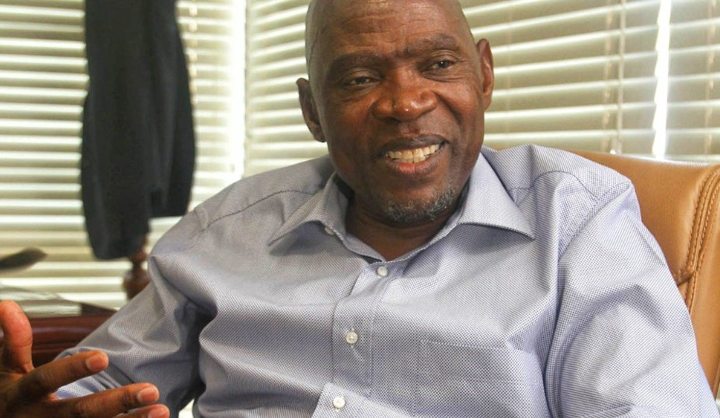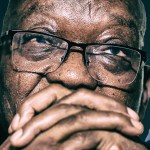Africa
amaBhungane: Facts around Malawi water scheme don’t wash

Malawian billionaire Simbi Phiri is at the centre of a new controversy after it emerged that he will be both referee and player in a giant $500-million Malawi government water scheme. By Serah Makondetsa for AMABHUNGANE.
It has emerged that Malawian billionaire Simbi Phiri’s company will assess the “feasibility” of a project from whose construction he stands to benefit – a move seen as a clear conflict of interest.
Major questions have also been raised about whether the project – to pump water from Lake Malawi to the capital Lilongwe – makes financial and technical sense.
The chief executive of the Lilongwe Water Board, Engineer Alfonso Chikuni, told amaBhungane this week that Phiri’s companies, Khato Civils and South Zambezi, had been “identified” and “would carry out feasibility studies, procure and construct” in a turnkey arrangement on the Lilongwe-Salima scheme.
The approach has drawn fire, with critics arguing that it is unusual and involves an inherent conflict because the would-be contractor has an interest in glossing over pitfalls and overstating the feasibility of the work.
Phiri announced in an advertorial in South Africa’s Mail & Guardian in January this year that Khato was “the successful bidder”.
He put the value of the contract at $500-million, although Chikuni said the correct figure was about $396-million.
Although managed by the water board, it has large implications for President Peter Mutharika’s government. Chikuni said the board would raise loan finance on the strength of a government “sovereign guarantee”.
Malawi’s Daily Times reported that the project will commence at the beginning of next month and that construction will run for 24 months.
In the M&G announcement, Phiri said the “ground-breaking scheme” would pump 50-million litres of water a day from Lake Malawi to the Malawian capital along a pipeline more than 130km long.
It would be “a catalyst for growth, as it will not only improve drinking water, sanitation, hygiene and waste water management, (but) will see the growth of industries and the manufacturing sector leading to the growth of new towns”.
He said it would also create 4,000 jobs.
A well-informed source who has analysed the contract, but asked to remain anonymous, told amaBhungane that a scheme of this size would normally take two years to prepare.
Pre-feasibility and full feasibility studies should be conducted, as well as environmental and social impact studies, followed by detailed designs that are then made public.
“No investor can put in that kind of money without knowing if a project is feasible and economically sound.”
The source said the design for the project – an engineering, procurement and construction (EPC) turnkey deal – is unusual and incorporates “a built-in conflict of interest”.
“Normally, the pre-feasibility and feasibility studies, and the detailed designs, are done by independent consultants through a tender, while construction is undertaken by the contractor supervised by the consultants who did the designs.
“Because the contractor is always keen to have the project built to make money, he can glorify the feasibility to win approvals for construction. The two should be separated.”
The chairperson of Malawi’s parliamentary committee on natural resources and climate change, Werani Chilenga, complained that the government has not been transparent on the project.
“I cannot say I have heard or know much about it – all we know is that government will give a guarantee to Lilongwe Water Board to borrow money from overseas. As a committee, we are not happy and have many questions,” he said.
Chilenga added that the committee fears the project is not economically viable and will do more harm than good to Malawians.
“Clearly government has upside-down priorities. We have power blackouts because Escom (the power utility) is failing to generate the required power due to low water levels. How do they think they will be able to generate the power needed to pump water from Salima on the lake to Lilongwe? Why should we be pumping water upland?
“This project is very costly and in the end the consumer will pay if the project fails.”
Chilenga said principal secretary in the ministry of agriculture, Erica Maganga, failed to answer the committee’s questions when she appeared before the committee earlier this year.
“Maganga failed to convince us. She did not have a feasibility study or any information regarding any groundwork for the project, and yet Lilongwe Water Board has gone ahead and awarded the contract.
“We were not convinced about why this project should be carried out, bearing in mind the huge sums of money that could be wasted,” he said.
AmaBhungane sent Maganga a detailed set of questions on the Salima-Lilongwe scheme, but she has failed to answer them over a two-week period.
Khato Civils spokesperson Taonga Botolo also failed to answer amaBhungane’s questions (see sidebar).
Major questions about the scheme were raised by one of Malawi’s foremost water experts, Kenneth Wiyo in two articles published in The Nation newspaper last month.
Wiyo, associate professor at the Lilongwe University of Agriculture and Natural Resources, also emphasised that there has been no feasibility or pre-feasibility studies, or formal assessment of the possible impact on the environment and communities whose land will be crossed by the pipeline.
Wiyo also asked:
- Why has the low-cost approach of capturing river water before it reaches the lake, rather than being pumped uphill to Lilongwe, not been adopted?
- The gravity method, used to feed water from Mulanje Mountain to Blantyre, would also create opportunities for hydropower generation, fish farming and tourism, Wiyo said;
- Has any estimate been made of the power requirements of lifting water almost 2 000 feet from the lake to Lilongwe, and what will be the source of this power?
- Wiyo said his students had estimated the required power usage at between 68 and 128MW, in a country where Escom failed to generate 300MW. He asked how the new demand would be squared with repeated blackouts and rationing across the country.
- How much water is to be abstracted from Lake Malawi, and will it will have an impact on the outflow of the Shire River, affecting hydropower generation?
- • What is the required pipe size; how easily and quickly can the pipes be laid; and will they be locally manufactured or imported?
- What route will the pipeline take, and will it need land bridges and aqueducts to cross rivers, gullies and dambos? Will a storage dam be needed, like Mudi Dam in Blantyre?
- Have studies been conducted on soils and geological formations to inform decisions on the pipe material use? Wiyo said he knew of a Malawian irrigation project where nearly 9km of piping had been replaced due to corrosion.
- Will the proposed pipeline route involve land tenure, settlement removals and compensation issues, and who will be responsible for compensating affected communities? Wiyo said that in the past enraged communities had chased ministers from project sites to protect their interests.
- Why has an environmental and social impact assessment not been conducted, given that it is required by Malawi’s Environmental Management Act? Wiyo said it would be a criminal offence not to conduct such a study and not to act on its recommendations.
The president of the Malawi Institution of Engineers, David Mzandu, said the project is technically possible, but added: “I cannot invest my money in something where I am not sure if I will get returns. If you are going to invest, you must know the economic viability.
“I am sure government is aware that such a huge project requires a feasibility study.”
The director of water services in the agriculture ministry, Steve Mwanza, said he could not comment on the project.
“My office has no information about that project. Ask Lilongwe Water Board,” he said.
The water board’s Chikuni confirmed that the board had signed an agreement with Khato Civils “subject to a couple of conditions precedent to effectiveness. Government arms have been consulted in the process”.
He confirmed that the contractor will finance the project in terms of a government sovereign guarantee.
He said six companies participated in a restricted tendering method of procurement, where contractors were selected based on technical experience on similar assignments carried out in Malawi or internationally, as well as on their reputation.
The other bidders were the Sinohydro Corporation Ltd of China, PW Engineering of the United Kingdom, Mota Engil of Portugal, China Railway Engineering No. 21 and the Italian company, CMC di Ravenna.
Khato and South Zambezi also operate in Botswana and South Africa, and Phiri recently made headlines after being found to be carrying $7.8-million in cash, which he had under-declared when crossing the border.
The money was provisionally seized as possible evidence of money-laundering, but was returned to him after he approached the Gaborone High Court.
The City Press reported last year that Khato Civils was paid R170-million for the emergency refurbishment of Giyani’s water and waste water plants, but that 18 months later “there was still little water to be had in Giyani’s pipes”.
Phiri told the newspaper although Giyani still had water problems, the situation had improved dramatically.
Visit to SA by Malawian journalists
Simbi Phiri and his spokesperson, Taonga Botolo, declined to answer amaBhungane’s detailed questions about the Salima-Lilongwe water project, despite several telephonic and emailed attempts to obtain a response.
But Phiri did accommodate other journalists, inviting about 10 Malawian media workers on a six-day free trip to South Africa last week to inspect Khato Civils projects in the country.
The journalists arrived on Sunday March 12 and were due to leave on Saturday March 18.
While in South Africa the journalists visited Giyani in Limpopo, where Khato Civils was paid R170-million for the emergency refurbishment of the Giyani water and waste water plants.
Botolo was sent emailed questions about Salima-Lilongwe on March 9. In a subsequent phone exchange, he invited an amaBhungane reporter to meet him in Johannesburg during his trip, when he would answer the questions.
When the reporter met him at OR Tambo Airport, he said he would answer some of the questions by email but needed to consult on others. He said he would call.
Despite two reminders, no email or telephonic response to the questions was received. DM
Photo of Simbi Phiri by Nyasa Times.
Provided by:
.jpg)
We are an independent, non-profit investigative journalism centre. Like this story? Be an amaB supporter. Sign up for our newsletter. Visit us at amaBhungane.co.za.















 Become an Insider
Become an Insider